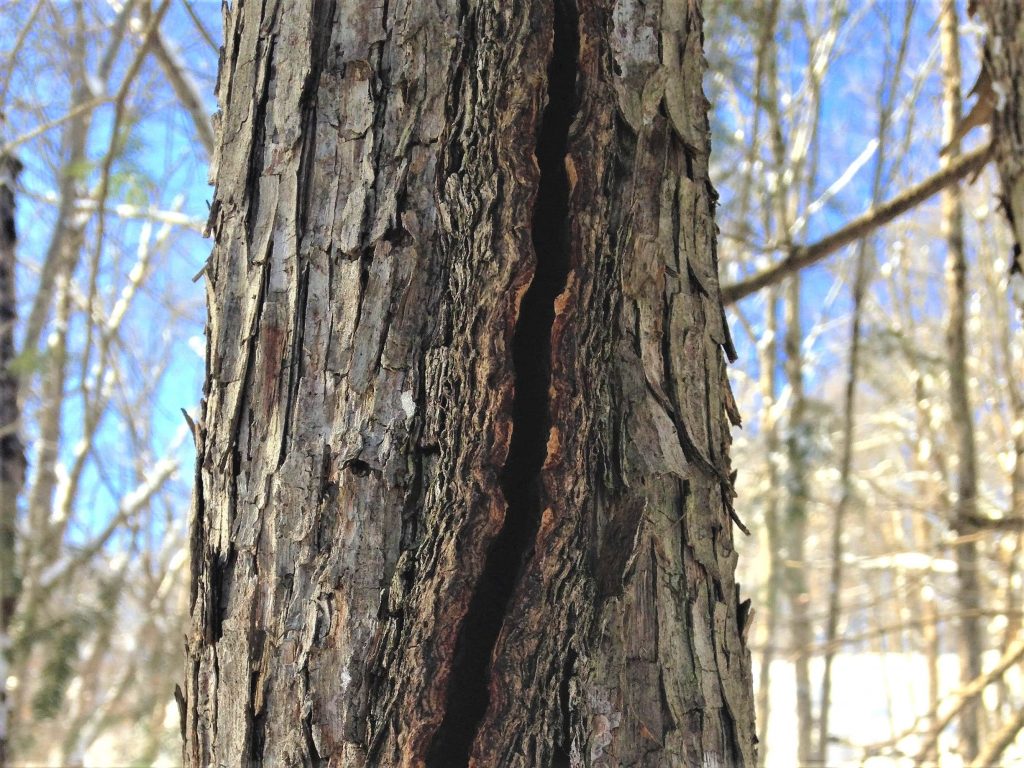Snow, Cold Weather Damage & Desiccation
Winter can cause many problems to the plants in our landscape. Taking some preventative caution can help illeviate these damages. In our three-part series, we will cover 1. Cold, wind and snow damage; 2. Deer and rodent damage; and, 3. Salt and ice melting chemical damage.
A winter’s blistery weather can affect different plants in different ways. Knowing each of these is critical to eliminating or at least reducing damage that you will see next Spring:
- Snow – in general snow usually isn’t a bad thing for most plants and in many cases is a good thing.
- Cold tempatures – a key to preventing this damage is knowing the hardiness your plants are. Obviously a cabbage palm tree that is rated for USDA zones 8 to 11 will not do good in Michigan (3 – 6)
- Drying winds – desiccation refers to the process of extreme drying, resulting in the loss of moisture.
Snow
For the most part snow does not usually kill plants, except for the Japanese Maple and other tender woody plants. Piling snow on top of these plants will definitely kill them. Heavy-wet snow can however break branches. This will not usually kill a plant but can deform a plant’s shape. Multi-stemmed evergreens, such as yews, arborvitae, and junipers, are often the most prone to damage. To protect these plants from limb breakage prior to winter, tie branches together loosely with strips of cloth or coated twine. Remove in early spring.
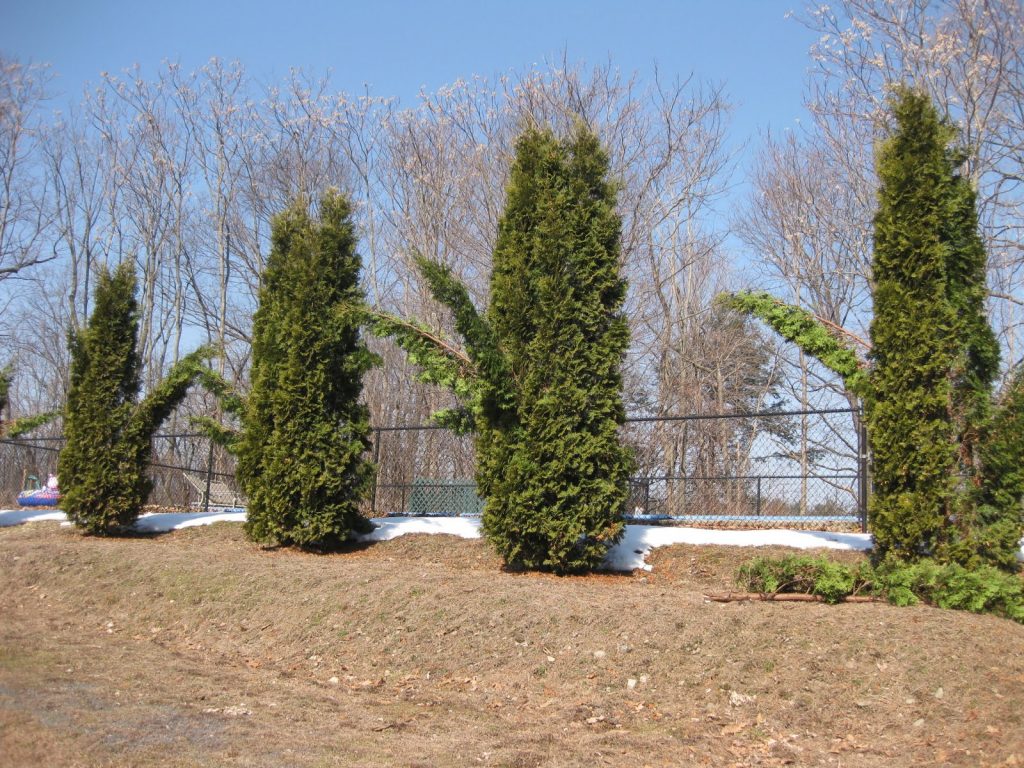
Prune for structural strength and durability. Inspect and selectively prune young trees to promote good structure and strong branching to increase their life span and improve survival rates in future storms. A few well-placed cuts when a tree is young can make the difference between a few broken limbs and complete collapse later in life when the tree is weighed down under a load of snow.
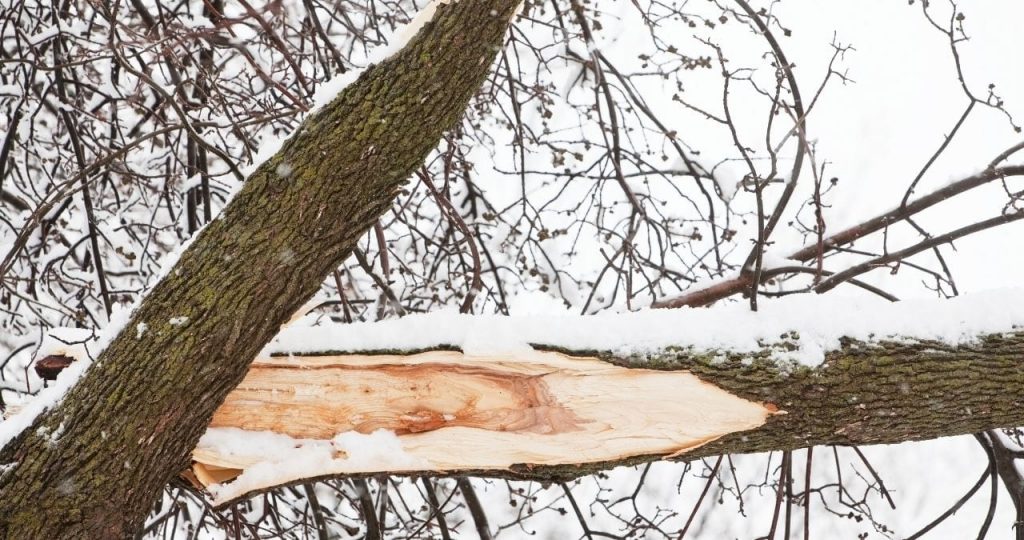
Snow can also have a good effect on some plants. Snow can insulate the ground from becoming extremely cold killing tender plants such as some perennials and shrubs. Root tissues apparently do not acclimate to temperatures much below freezing and can be killed or severely injured by soil temperature below 15°F. This is especially true for shallow rooted plants. Fortunately, the presence of mulch, leaf litter, or snow cover insulates most soils sufficiently to prevent soil temperatures from falling much below freezing. Plants with frozen roots may wilt and decline after growth resumes in the spring. Since there is no guarantee of adequate snow cover, mulching trees and shrubs (especially those that have been newly planted) becomes very important. Aim to apply at least two inches of woodchips or straw over the root zone, taking care not to pile mulch against trunks. Extra mulch can be removed in the spring once the ground begins to thaw. When available, cut evergreen boughs can also provide good insulation.
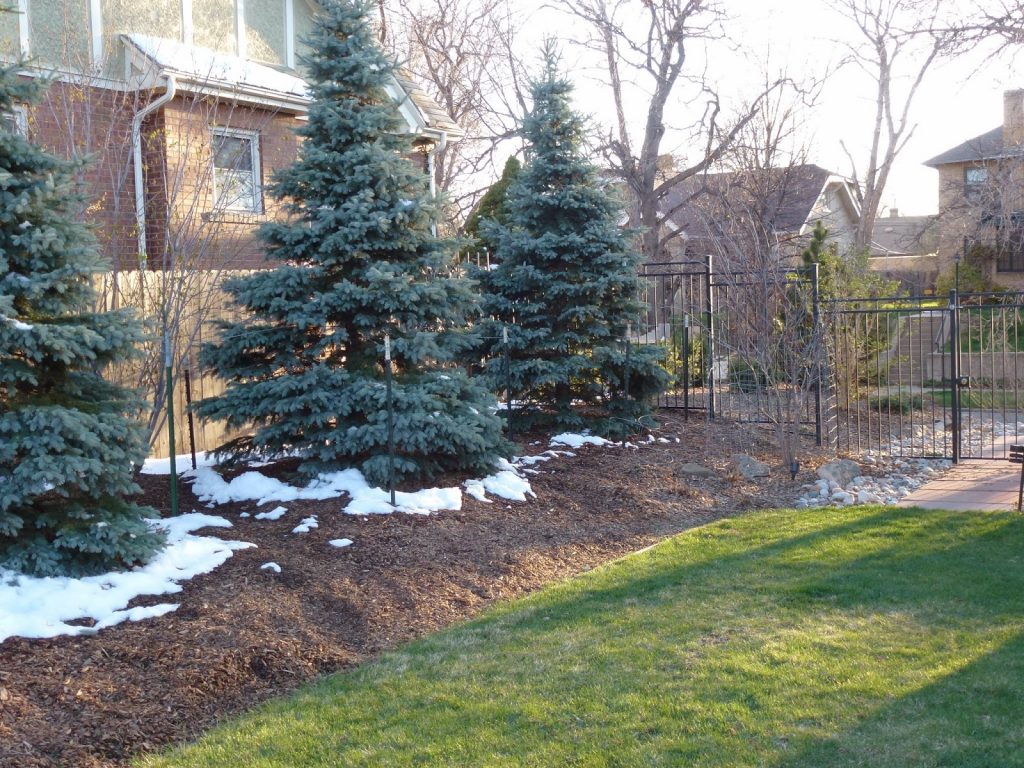
Cold Temperatures
Acclimation to temperatures much below freezing results from exposure to slowly falling temperatures and other factors. Plants that are dormant but not fully acclimated can be stressed or injured by a sudden, hard freeze. Rapid or extensive drops in temperature following mild autumn weather cause injury to woody plants. Extended periods of mild winter weather can de-acclimate plants, again making them vulnerable to injury from rapid temperature drops.
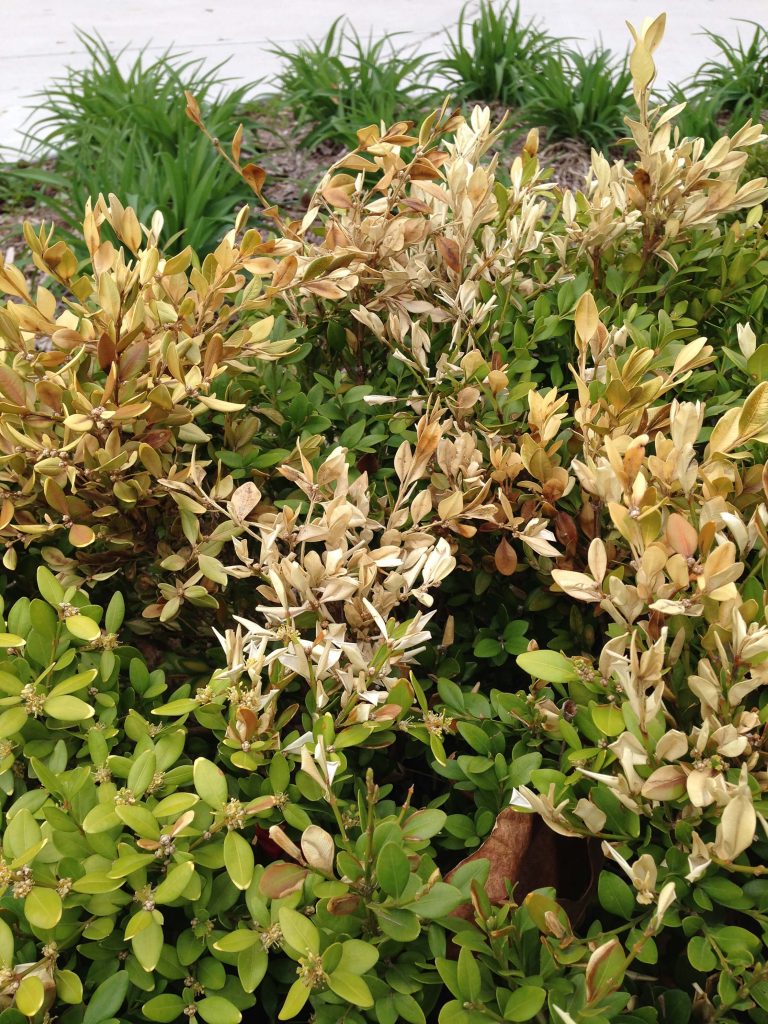
Some species or cultivars of trees and shrubs are injured if temperatures fall below a minimum tolerance level. Plants most likely to suffer winter injury are those that are marginally hardy for the area or those already weakened by previous stress. Species such as rhododendron, holly, and some magnolias may survive several mild winters in the Detroit region before a more typical winter causes injury. Flower buds are often the most susceptible. If plants with marginal hardiness are used, they should be planted in protected sites, such as courtyards or sheltered areas. In general, low temperatures are much less damaging than rapid and extensive variations in temperature. puddles, sometimes forming large groups called puddle clubs.
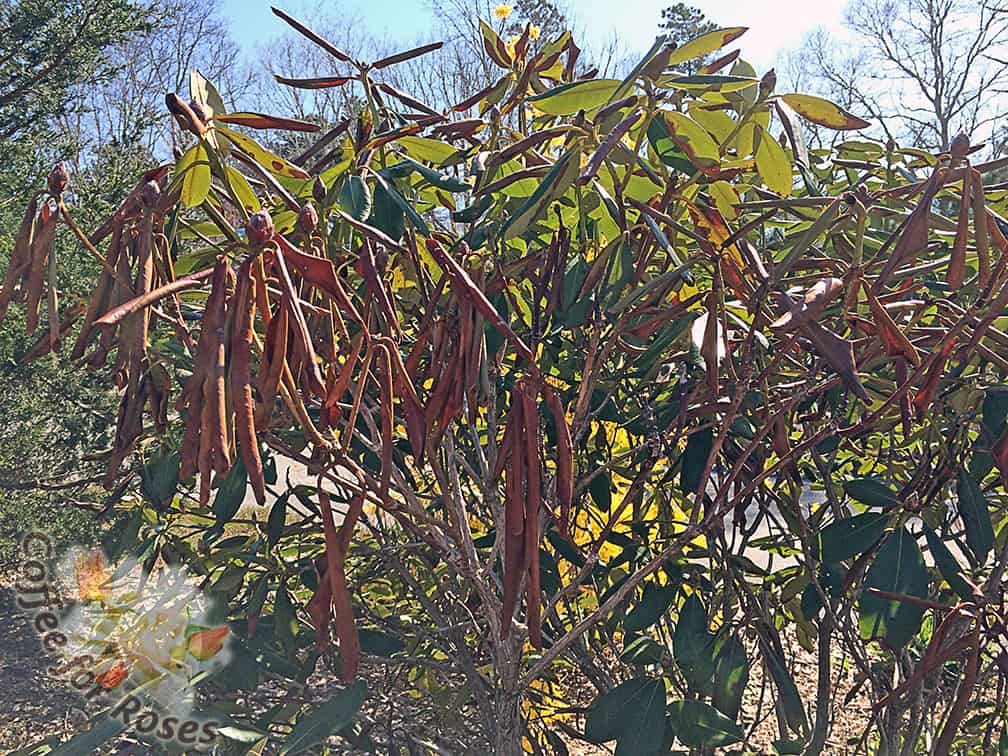
Once spring growth has begun, a late spring frost can cause damage to de-acclimated woody stems, blossoms, and new shoots. Frozen, succulent, new tissue turns flaccid, appears watersoaked, and withers within a short time. Though symptoms resemble blight diseases, freeze injury appears suddenly after a hard frost, while diseases such as bacterial fire blight, juniper blight, and pine tip blight are progressive over time.
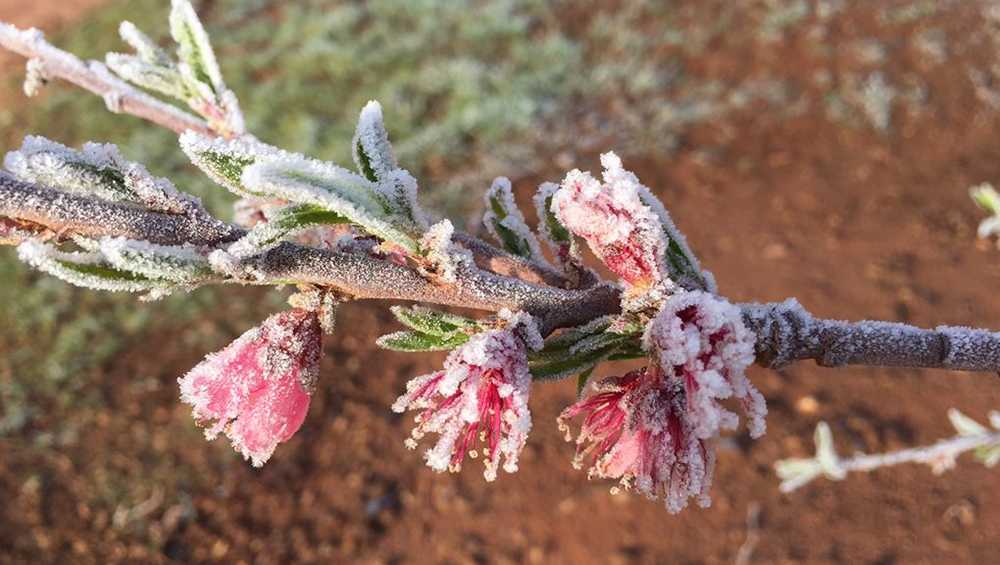
Drying Winds
Desiccation is when a plant’s tissues dry out from wind or ice-melting chemicals, lack of moisture in the air or soil, or a “wrong plant/wrong location” scenario. Broadleaf evergreens, such as Rhododendrons are particularly susceptible because their leaves never stop losing water, even during their “dormant” season. When these leaves evaporate more water than the roots take in, you’ll see some damaged foliage.
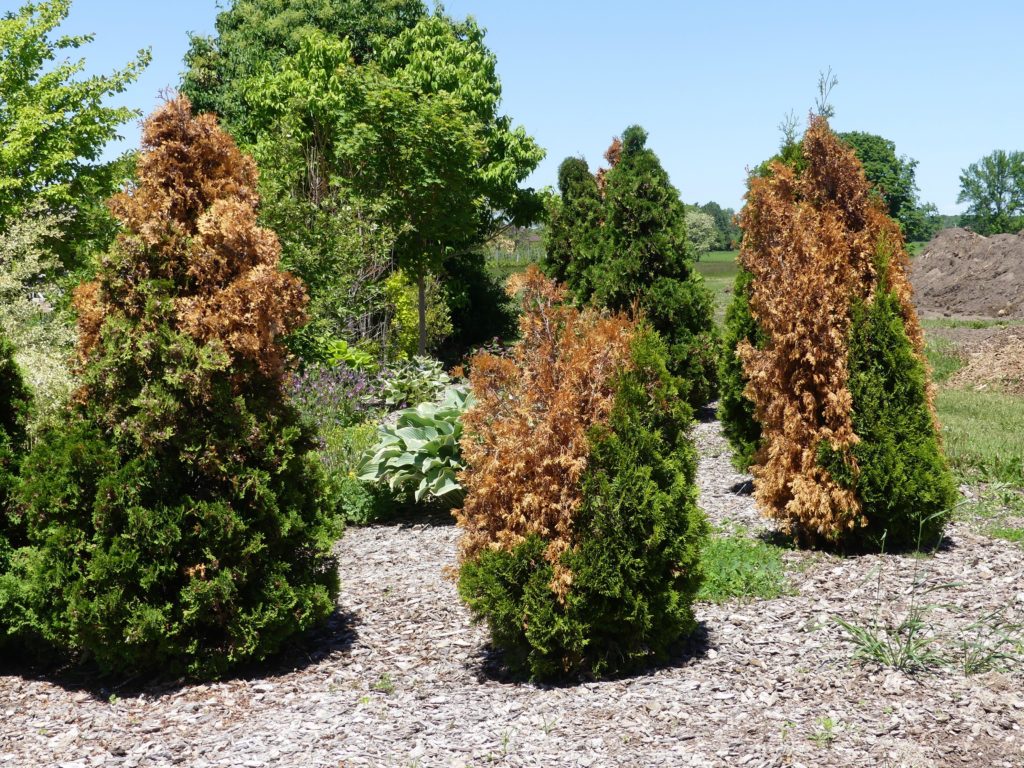
During severely cold weather, the ground surrounding the root system can freeze, which decreases or stops the uptake of water. If the weather turns warm and sunny while the ground is still frozen, evaporation increases and discolored or “burned” foliage starts to appear. The damaged leaves are generally concentrated on the side of the plant facing the wind, where evaporation is greatest.
If conditions are dry in fall, make sure you water to compensate for the lack of rain. If plants begin to show signs of winter burn, pull out the hose on the warmest day possible (to avoid the hose freezing and bursting) and water the frozen ground to melt the moisture frozen in the soil and make it available for uptake. It’s also a good idea to maintain a 2- to 3-inch-thick layer of mulch to reduce water loss.
Desiccation can be mitigated by erecting windbreaks made from burlap or canvas attached to frames around the plants. These barriers should be placed on the side of the prevailing winds. Some plants such as arborvitae have growth habits which lend themselves to a complete wrapping of burlap. If wrapping plants, never use black plastic as it causes extreme temperature fluctuations. Wrapping with burlap and building windbreaks isn’t always enough to prevent winter injury, but it can help. If nothing else, plants wrapped with burlap are less likely to be browsed by deer.
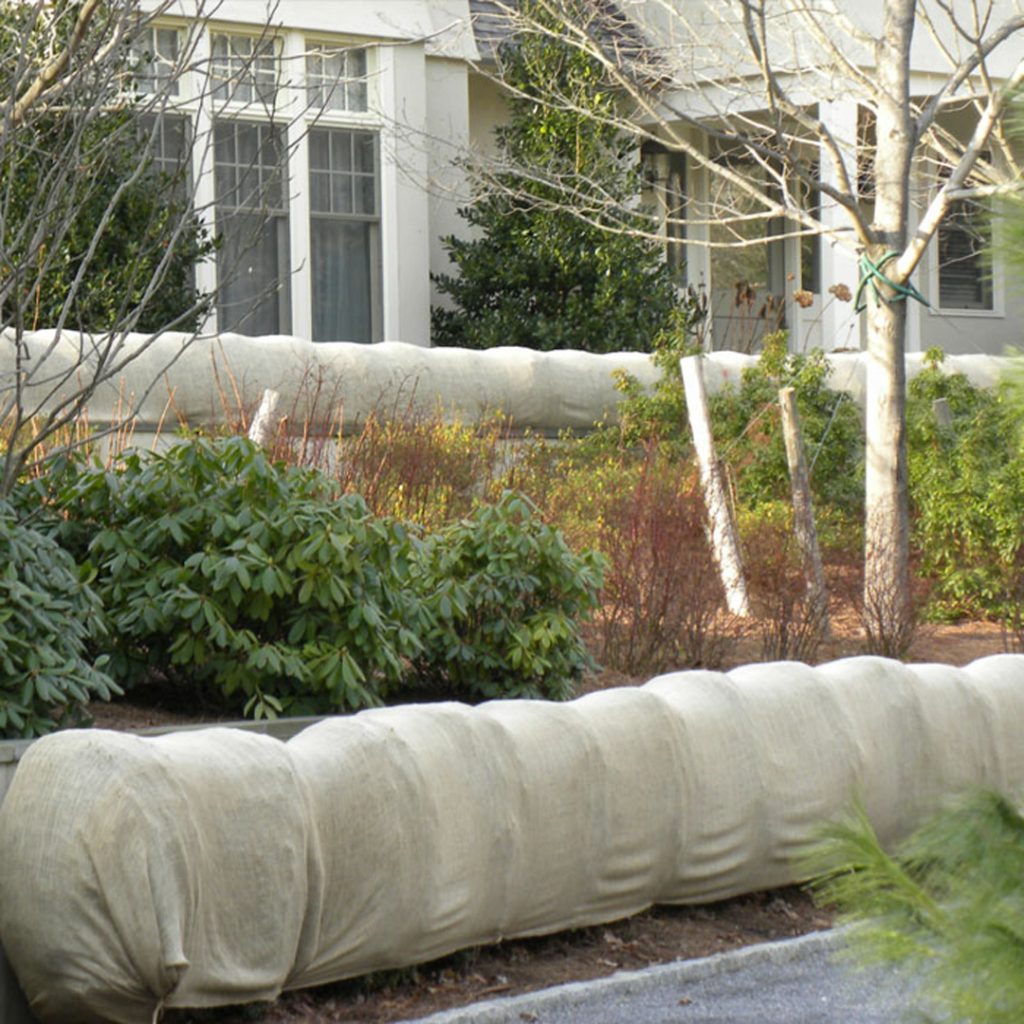
There is evidence that anti-dessicants can be helpful when applied correctly but they can be ineffective or even damaging when used inappropriately. For best results, make sure to read and follow all instructions on the product label. Most anti-desiccants are best applied when temperatures are around 40-50 degrees. Within this temperature range, the spray should have good coverage on the foliage. Because plants lose water through both the upper and lower surfaces of their leaves, all parts of the plant should be sprayed. Make sure not to apply too early. Spraying anti-dessicants before plants are dormant increases potential for damage, because the spray can trap excess water in leaves, which can freeze and cause cells to rupture. Wait to apply until evergreens are fully dormant in the late fall.

Select resilient plants that are resistant to wind damage. The narrower the angle of attachment of a branch to the trunk, the more likely the branch is to break or split. Some trees naturally form lots of narrow angles, making them extremely susceptible to falling damage from wind, snow, and ice. ‘Bradford’ pear is the classic example of a weakly structured tree prone to self-destruction in winter storms. Avoid planting these weak wooded trees that are more likely to be damaged in wind, snow, and ice: Leyland cypress, lacebark elm, Bradford pear, water oak, silver maple, green ash, willow, and pecan. Replace damaged trees with ones more resistant to wind and ice damage including crape myrtle, bald cypress, hickory, ironwood, ginkgo, and white oak. Tie up narrow, upright, evergreens with multiple leaders to prevent breakage and splaying. Ring the outside of the plant with rope or narrow strips of cloth or tie the main leaders together high up inside the shrubs. Be sure to remove the binding after the snow has melted. Arborvitae, upright junipers, Leyland cypress, and ‘Sky Pencil’ holly all can be disfigured or splayed under heavy snow loads. Consider replacing these plants with ‘Oakleaf’, ‘Nellie Stevens’ or ‘Needlepoint’ holly.
Even when you do everything you can to protect plants, winter damage is still a possibility. Some plants are simply better adapted to survive than others. Many winter injury issues can be solved by choosing appropriate plants, and hardiness is the first thing to consider. Trees and shrubs should be hardy enough to survive in the zone where they are planted without too much extra care. In most of Michigan, this means selecting plants which are hardy in Zones 3-6.
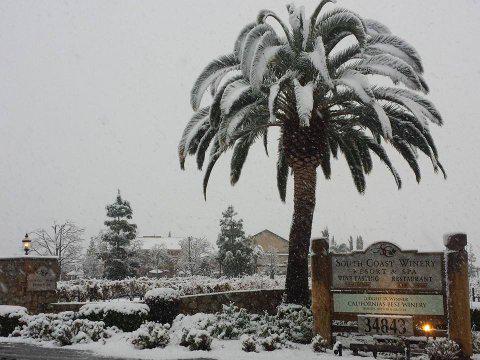
Another thing to keep in mind is planting trees and shrubs in the proper place in the landscape. Winter winds and sun can be extremely damaging to evergreens so they should be planted in protected spots out of the prevailing winds. Broadleaf evergreens in particular should be planted on the north, northeast, or eastern sides of buildings, or behind barriers where they are protected from the elements.
Broadleaf trees that have thin bark, like maples and cherries, are susceptible to frost cracking. This type of injury occurs on the southwest side of trees on sunny days in the winter when the sun warms the bark enough for the sap to flow. When the temperature drops quickly, the bark contracts and splits vertically. Sunscald can also occur when the temperature drops suddenly. Cells that have become active on the sunny side of plants are killed, resulting in dead, sunken areas. If planting a tree with thin bark, try to place it in a location where it will receive some protection from winter sun instead of in the open landscape. Even consider placing smaller shrubs near the base that will shade the south side of the tree and reduce the likelihood of frost cracking.
